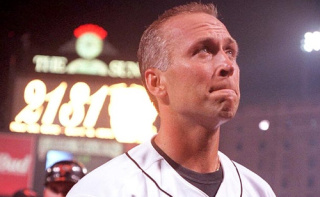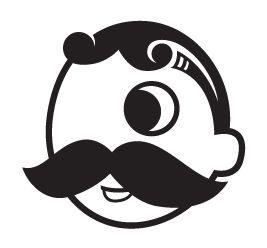Let’s talk science.
We all occasionally listen to the radio. Maybe not as much as we once did, but we still do. Most of us listen to FM radio because the sound quality is better and, as a result, music is more often the stuff broadcast over FM stations. Probably fewer of us listen to AM radio, short of talk news and sports talk stuff.
The difference between AM and FM is radical. FM radio waves, if you could visualize them are your typical sine wave. It modulates between a high and a low frequency and travels through the air like the waves of a sea. FM radio has better sound because this modulation can carry more aural information.
AM radio is far different. It’s much more a straight line wave that can’t carry as much aural data, so the sound quality is reduced. The tradeoff, however, is that AM radio can travel much farther. In fact, for AM radio, range is determined by amplitude, or strength, of the power generating the waves.
The side effect of this is that AM radio waves travel into the atmosphere and interacts with the ionosphere, the atmospheric layer that protects us from the most harmful radiation from the sun. During the daytime, the AM waves hit the ionosphere and largely fizzle out due to the layer’s interaction with the sun, but at night… the sun isn’t sending all it’s fiery goodness at that part of the earth and so a bounce effect happens. AM radio waves hit the ionosphere and bounces back toward the earth allowing radio stations to be heard hundreds of miles away from their source – often times well over the horizon.
As a result, the FCC has had a decades-old regulation that requires AM radio stations to reduce their signal or alter their night operations so as not to interfere with stations in other markets. Stations typically will do this by redirecting their antennas so that even if the signal is heard hundreds of miles away, it is heard in such a way to not interfere with other stations broadcasting on the same frequency.
Still with me? Whew. Good.
 Back in 1995, I was sitting in a dorm room of a religious college I was attending at the time. There were pretty rigid rules for freshman. In my case, we were required to do a nightly “study time” in our dorms. The idea was to train students to focus academically. In later classes, the rules were relaxed and study time was not mandatory.
Back in 1995, I was sitting in a dorm room of a religious college I was attending at the time. There were pretty rigid rules for freshman. In my case, we were required to do a nightly “study time” in our dorms. The idea was to train students to focus academically. In later classes, the rules were relaxed and study time was not mandatory.
Still, you know how I am with rules. I sullenly sat in my room night after night and probably didn’t do the best job academically. I digress.
September 6, 1995 was kind of a historic day. Besides being my 19th birthday, it was also a big baseball day. It would be this day that Cal Ripken, Jr. would break Lou Gehrig’s consecutive game streak setting a new record of 2,131 games played in a row and becoming the new Ironman. Back in those days, before the 1997 debacle, I was an Orioles fan before changing allegiances to a much better team (sans this past year). I’m looking at you, Kate.
I grew up with the Orioles and I was understandably upset that I had to be in my room instead of watching the game on TV. I discovered, however, that I could hear WBAL 1090 AM in my dorm 17 miles south of Rochester, NY and some 300 miles away from Television Hill in Baltimore, where the station broadcast from. As a result, I was able to listen to that historic game on the radio thanks to science.
What’s the point of this already long-winded story, you may ask.
I’m glad you asked, since I actually do have a point.
I’ve talked about business a lot here. Startups, projects, whatever. I’ve been involved in a few in my career. I’ve advised several. I’ve been a Co-founder in one. I’ve been staff for others. There’s a concept in startups called the “pivot”. Pivots are when you change your business model or approach due to market demands or user feedback.
In some cases, pivots are major. Seesmic pivoted a ton from a video chat service to a video blog comment service to a social mass posting service. Every pivot was essentially a new company.
Other pivots are more minor. A move to focus more on user content aggregation from a company content aggregation. Or a move to a subscription model from an advertising model.
I’m a fan of the second form of pivot which basically suggests the premise of a company is sound, but based on the ability to listen to user demand and appropriately respond in the marketplace, a company can adjust and tweak and run with the concept that made them strong as a company to begin with. If I were to start investing myself, I’d want to be on board with a company that can stay true to itself, while demonstrating the ability to adjust.
Some people, like Jason, advocate doing market research to decide your premise. Ask questions. Conduct interviews. Find out, before putting time in, that the idea is something that someone will pay for. Others, like Eric Ries, also endorse The Lean Startup approach of building, collecting feedback, iterating and repeating to allow a company to evolve organically. These are all good ideas that help set the framework and paradigm for how your company operates and your product evolves.
Which brings us full circle to radio. I was able to listen to Cal’s historic day in 1995 because the company (or radio station in this case) was able to perform a pivot (literally) to redirect their signal without changing who they were. They knew FCC regulations when they decided to broadcast on AM. They knew the framework of science they had to live in. They built a radio station for reach and strength and adapted as they were required to and allowed to.
You may never start a company. You may never hire employees. But the universal concept is: Know what you’re doing, why you’re doing it, don’t change who you are or the strategic philosophy under which you operate, but be willing to make the tactical choices needed to succeed.

